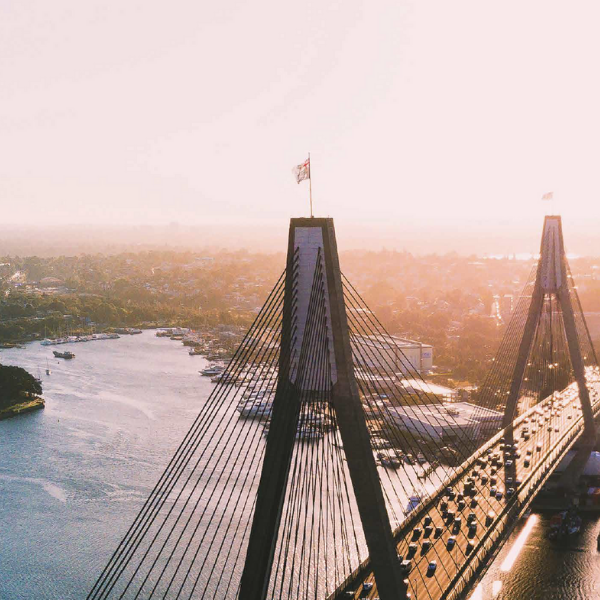Plan a Sydney that has well-connected communities, industries and infrastructure in the right places.
While Sydney has taken a beating from Covid-19, we believe that population and job growth will return as the world recovers. Sydney’s planning system needs to do the heavy lifting to make sure that we welcome the growth gracefully. This means continuing to support the CBD and other job centres as we work through changes in working patterns triggered by the pandemic while making room for a wide variety of new industries.
People who live or work near major transport hubs will have great access to the rest of Sydney. In residential areas, they can anchor town centres with shops and amenities for the broader community.

Local shopping streets provide enormous convenience to people. They give neighbourhoods their identity and enable a casual enjoyment of city life. Sydney was originally built out with high streets as the centres of neighbourhood life, but now, many have been degraded by poor traffic management. They should be nurtured, reinvigorated and protected, and in some cases created from scratch to bring them within walking distance of all Sydneysiders.
The traditional Sydney terrace house is beloved by most people, although it is a higher density building type than what got built after World War II. As part of diverse housing options, we should welcome modern versions of the terrace house, as well as other low-rise formats, in places where taller buildings don’t make sense.
Given Sydney’s growth numbers, greenfield development is a reality; not all of it is going to happen within the existing urbanised footprint. But greenfield development shouldn’t be on the old model, which locks people into permanent car dependency and forces everyone onto long commutes. We need to build new complete neighbourhoods supported by infrastructure, above the minimum density threshold and designed to support local shops and public transport.
Sydney experienced explosive growth in the decades after World War II, and as a result many parts of the city reflect the values of the day: car-oriented, single-use development, with nothing to walk to. Some of these areas contain high concentrations of social and affordable housing nearing the end of its useful life. We need to figure out how to renew and adapt the postwar suburbs to include a greater mix of uses — to offer smaller blocks, more amenities, better public space, and more diversity of land use.
Places where people can meet and socialise are the underpinnings of city life. From streets to bush walks, from urban plazas to playing fields, we want to see a public space renaissance to improve quality of life for people regardless of age, income, or station in life.
Sydney is one of the most unaffordable housing markets in the world; fixing this will require a fundamental change of direction. Aspiring homeowners will benefit most from tax reforms like abolishing negative gearing, along with overall increases in housing supply. Lower income residents need investment in social and affordable housing, in line with what we see in other OECD countries. At all income levels, we also want to see a wave of experiments — with new construction methods, new dwelling types and new forms of ownership.
NSW should move from an ad-hoc, project-driven planning system to one that relies on integrated planning – to give greater certainty to both residents and investors. This includes predictability about developer contributions and other charges.